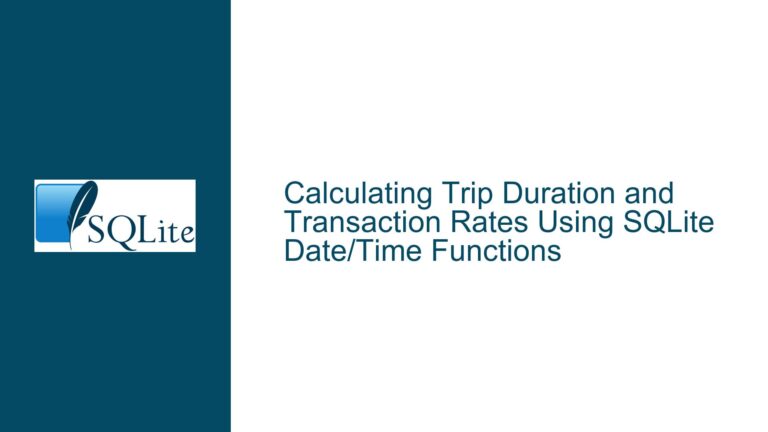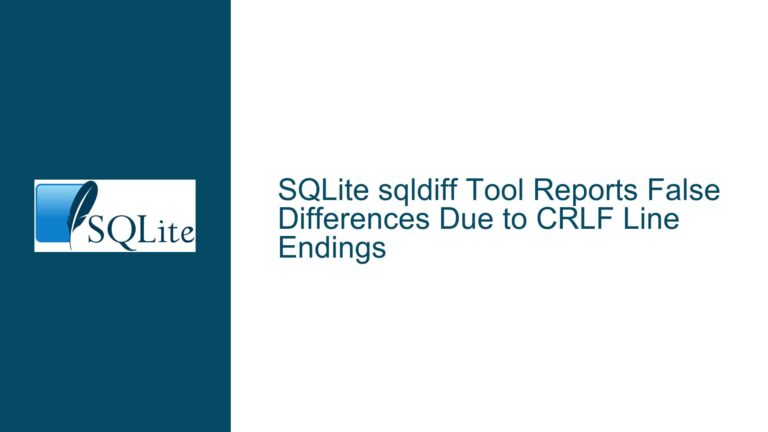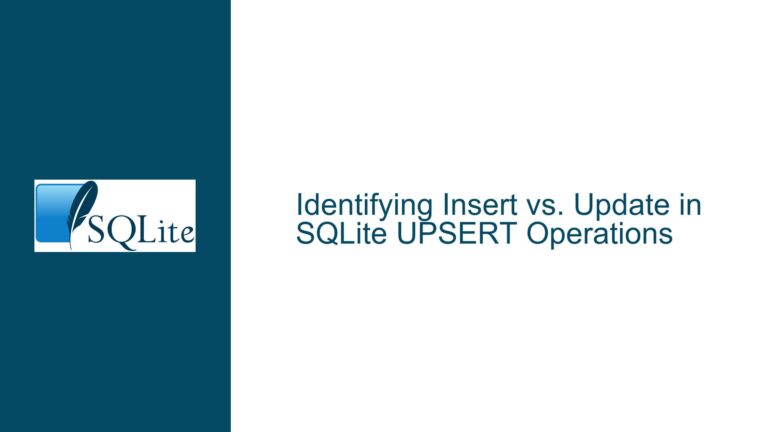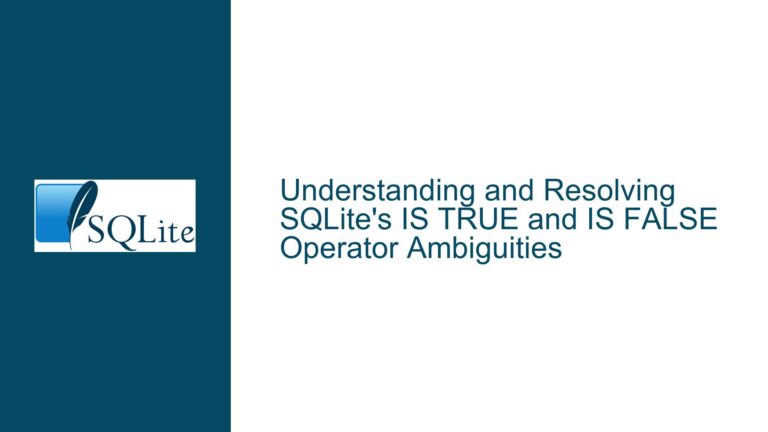Insert into View with RETURNING Clause Returns NULL in SQLite
Issue Overview: Insert into View with RETURNING Clause Returns NULL When working with SQLite, particularly with insertable views and the RETURNING clause, a common issue arises where the RETURNING clause returns NULL instead of the expected value. This issue is particularly perplexing because the data modification itself succeeds, but the RETURNING clause fails to return…









